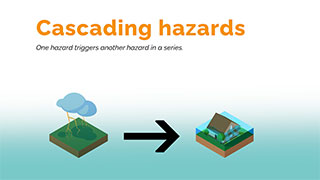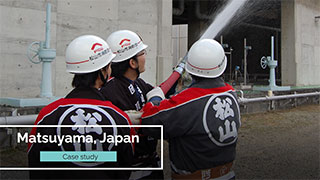ConclusionSummary of the course
Congratulations on completing the course “Building resilience to compound and cascading disaster risks”!
First, we reviewed the concept of DRR and learned how multi-hazards differ from single hazards. Next, we learned how to conduct a disaster risk assessment and discovered the vulnerable and exposed elements in your community that could be affected by multi-hazards. We then learned how to design resilience-enhancing measures to address the vulnerability and exposure in our communities to multi-hazard risks. Finally, we learned how to incorporate these measures into our plans and policies.
We encourage you to return to each lesson video at any time to review those parts of the lesson that you did not fully understand. The worksheets on each lesson page can be used for revision purposes. If you want to find out more, you can also take a look at the Useful links. From now on, we hope that you will apply this knowledge to your own country or local community, and be prepared to face the challenges of compound and cascading disaster risks.
Case Studies of compound & cascading disasters
This supplemental booklet is a compilation of examples of compound and cascading disasters from around the world. It includes multiple examples of three types of compound disasters: natural hazards and natural hazards, natural hazards and biological hazards, and natural hazards and technological hazards (NATECH). You can gain on-the-ground knowledge from the concrete examples and lessons learned to strengthen the resilience of your country or local community against compound and cascading disasters.






